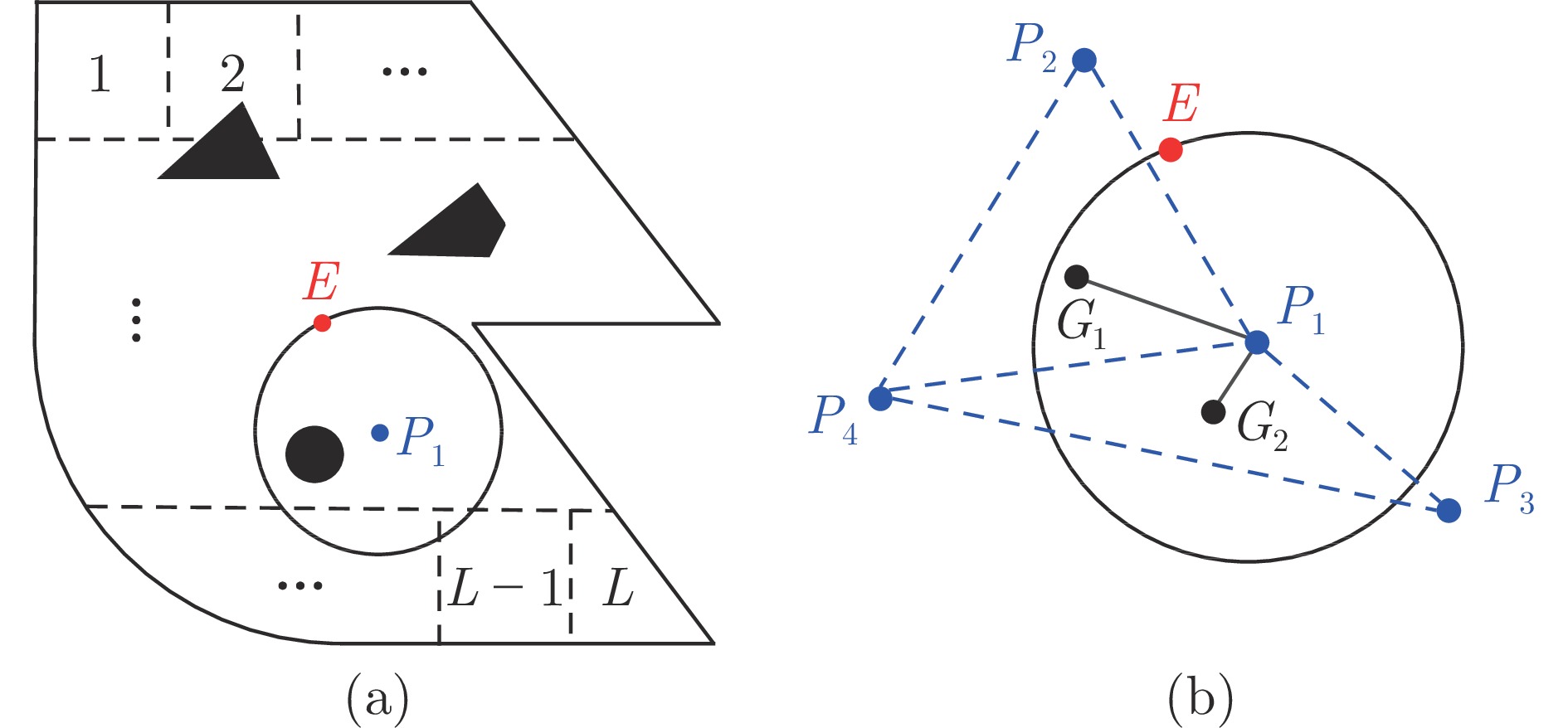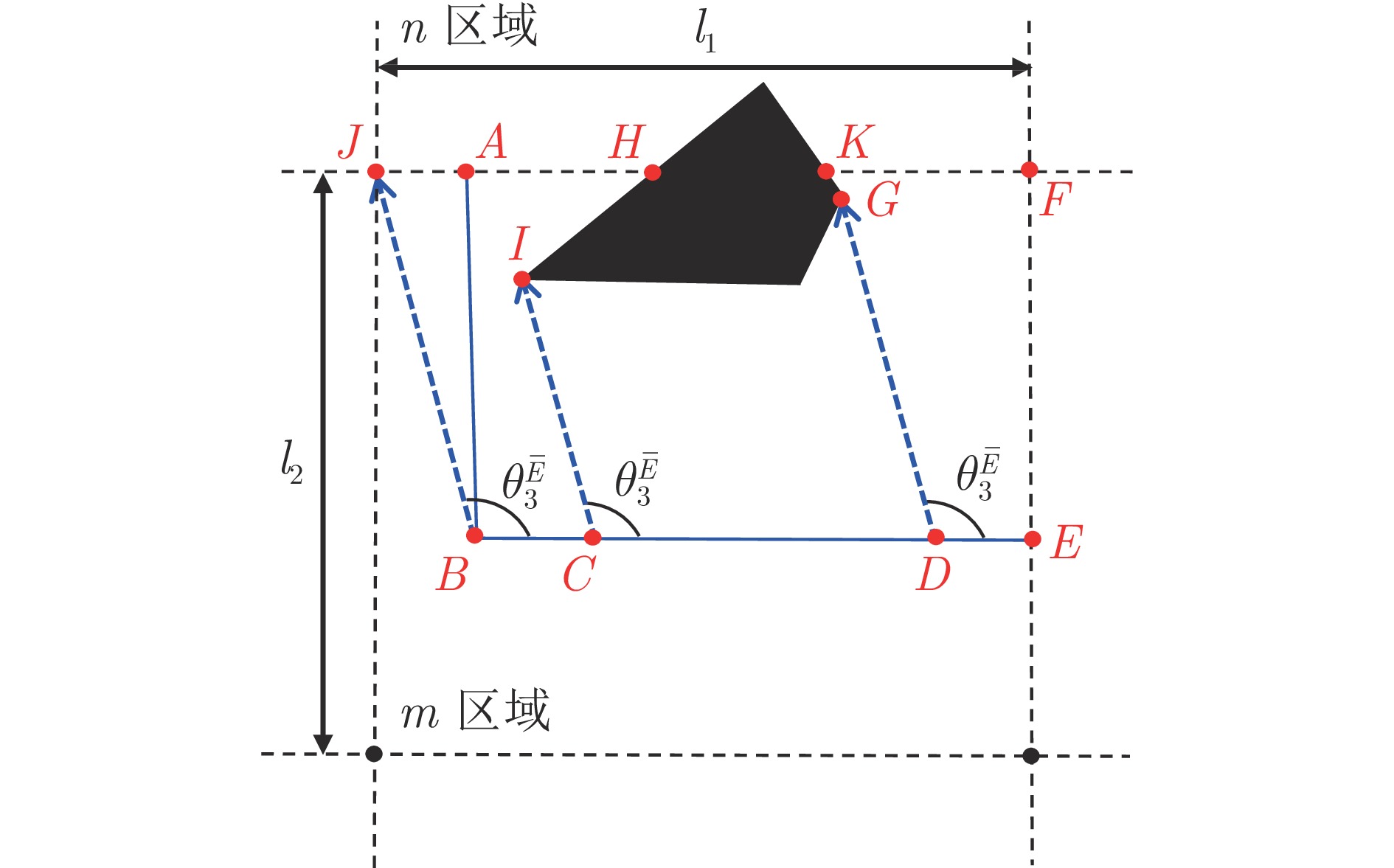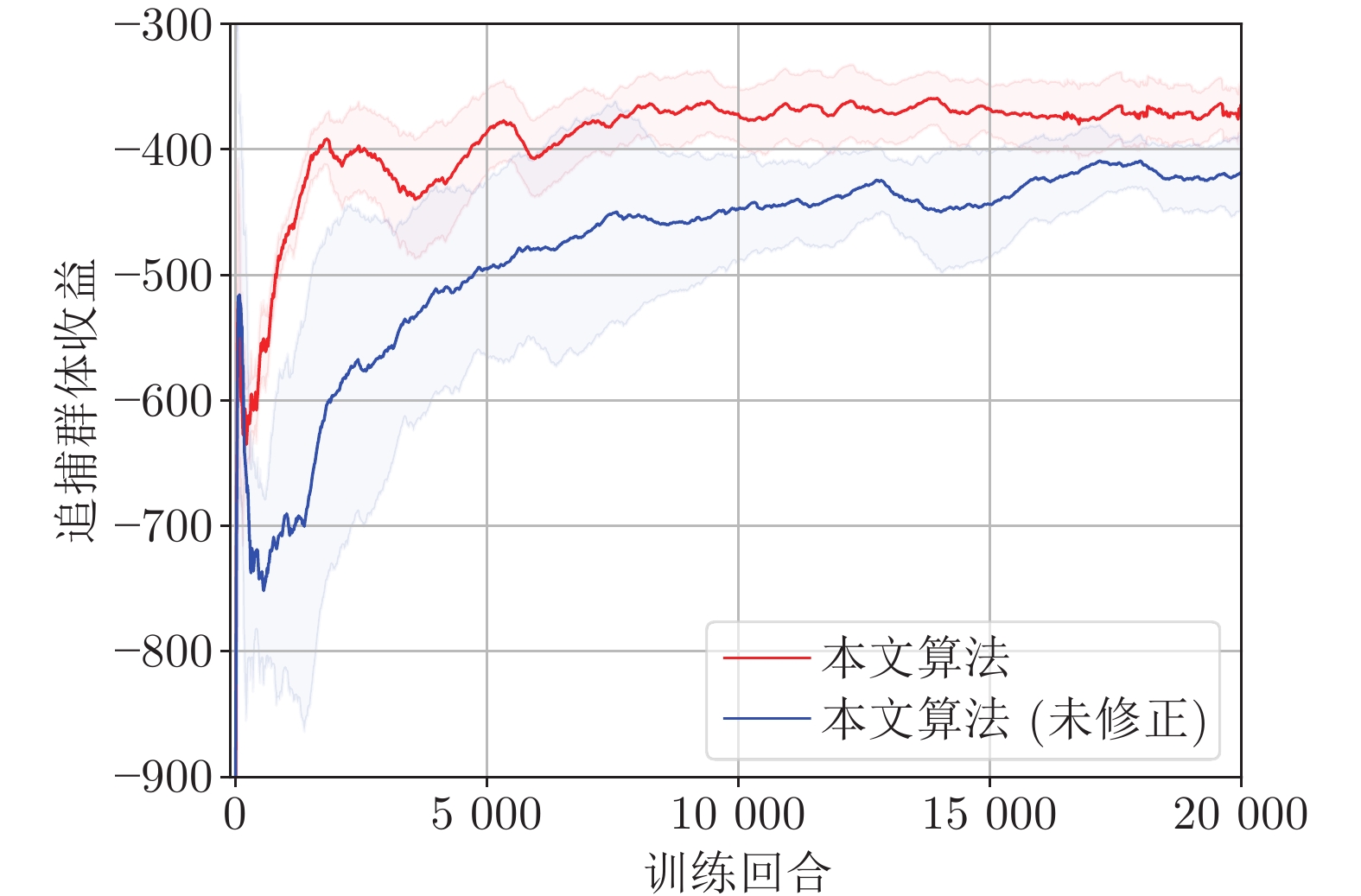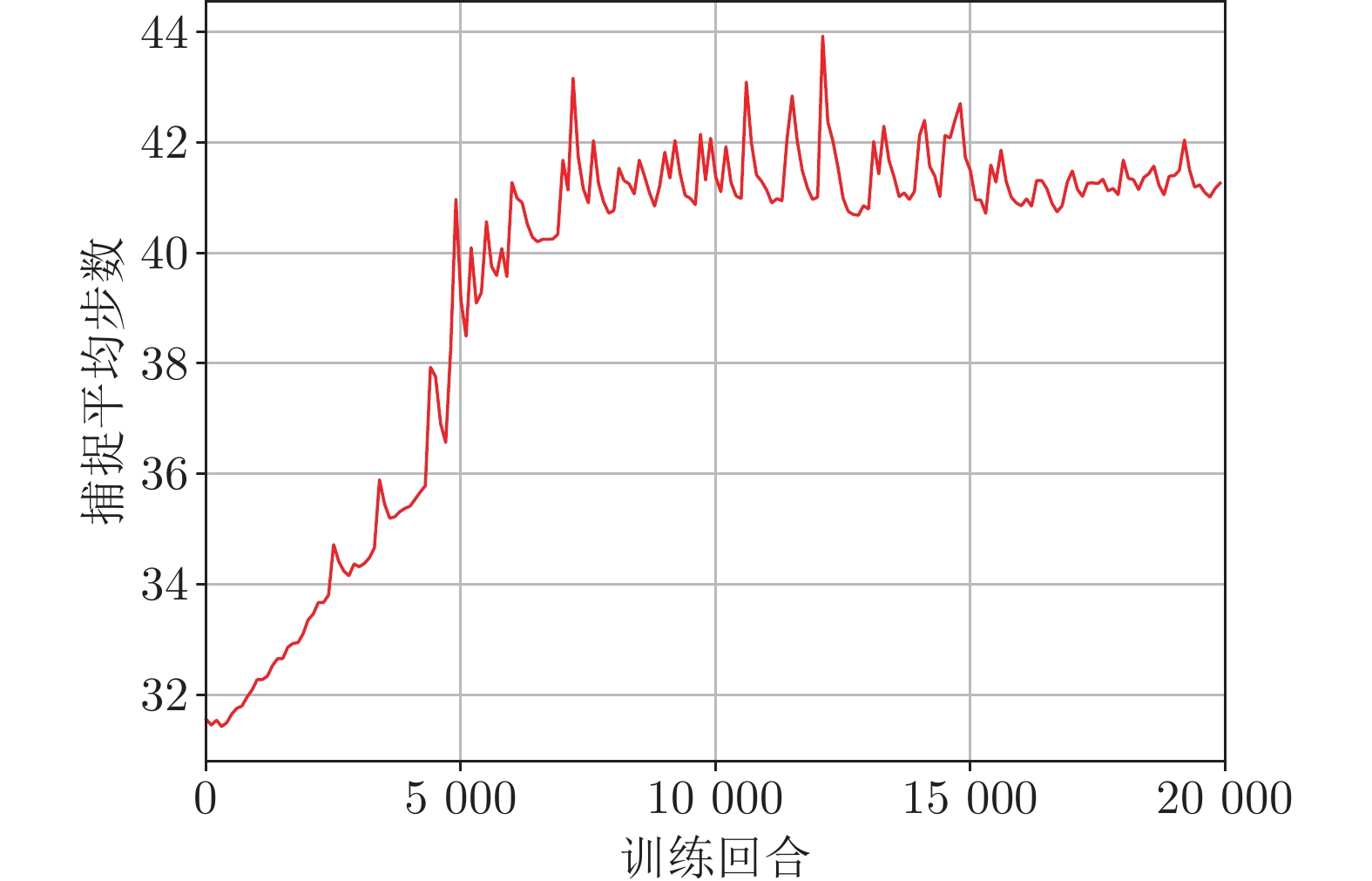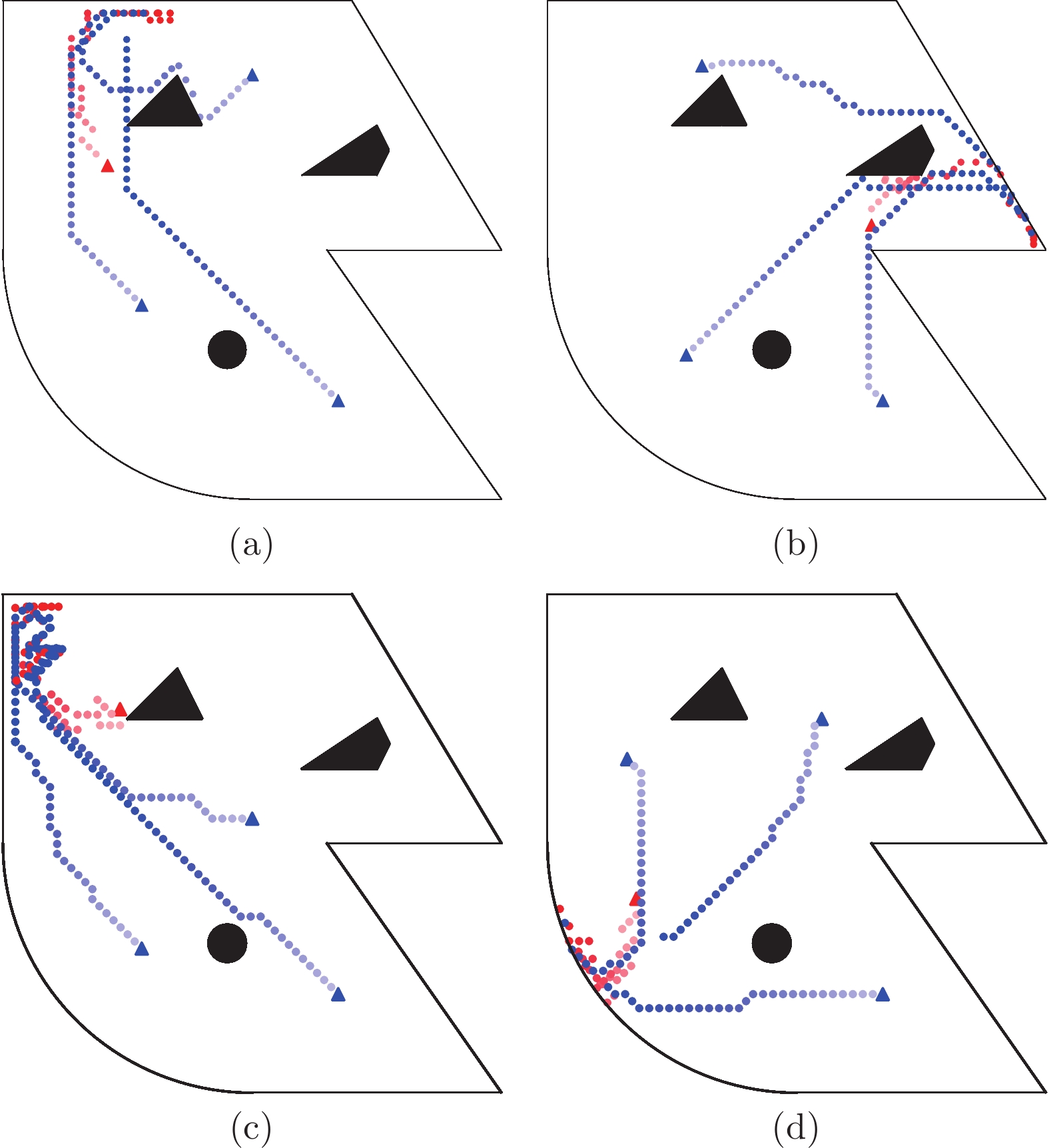|
[1]
|
杜永浩, 邢立宁, 蔡昭权. 无人飞行器集群智能调度技术综述. 自动化学报, 2020, 46(2): 222−241Du Yong-Hao, Xing Li-Ning, Cai Zhao-Quan. Survey on intelligent scheduling technologies for unmanned flying craft clusters. Acta Automatica Sinica, 2020, 46(2): 222−241
|
|
[2]
|
寇立伟, 项基. 基于输出反馈线性化的多移动机器人目标包围控制. 自动化学报, 2022, 48(5): 1285−1291Kou Li-Wei, Xiang Ji. Target fencing control of multiple mobile robots using output feedback linearization. Acta Automatica Sinica, 2022, 48(5): 1285−1291
|
|
[3]
|
Ferrari S, Fierro R, Perteet B, Cai C H, Baumgartner K. A geometric optimization approach to detecting and intercepting dynamic targets using a mobile sensor network. SIAM Journal on Control and Optimization, 2009, 48(1): 292−320 doi: 10.1137/07067934X
|
|
[4]
|
Isaacs R. Differential Games. New York: Wiley, 1965.
|
|
[5]
|
Osborne M J, Rubinstein A. A Course in Game Theory. Cambridge: MIT Press, 1994.
|
|
[6]
|
施伟, 冯旸赫, 程光权, 黄红蓝, 黄金才, 刘忠, 等. 基于深度强化学习的多机协同空战方法研究. 自动化学报, 2021, 47(7): 1610−1623Shi Wei, Feng Yang-He, Cheng Guang-Quan, Huang Hong-Lan, Huang Jin-Cai, Liu Zhong, et al. Research on multi-aircraft cooperative air combat method based on deep reinforcement learning. Acta Automatica Sinica, 2021, 47(7): 1610−1623
|
|
[7]
|
耿远卓, 袁利, 黄煌, 汤亮. 基于终端诱导强化学习的航天器轨道追逃博弈. 自动化学报, 2023, 49(5): 974−984Geng Yuan-Zhuo, Yuan Li, Huang Huang, Tang Liang. Terminal-guidance based reinforcement-learning for orbital pursuit-evasion game of the spacecraft. Acta Automatica Sinica, 2023, 49(5): 974−984
|
|
[8]
|
Engin S, Jiang Q Y, Isler V. Learning to play pursuit-evasion with visibility constraints. In: Proceedings of the IEEE/RSJ International Conference on Intelligent Robots and Systems (IROS). Prague, Czech Republic: IEEE, 2021. 3858−3863
|
|
[9]
|
Al-Talabi A A. Multi-player pursuit-evasion differential game with equal speed. In: Proceedings of the IEEE International Automatic Control Conference (CACS). Pingtung, Taiwan, China: IEEE, 2017. 1−6
|
|
[10]
|
Selvakumar J, Bakolas E. Feedback strategies for a reach-avoid game with a single evader and multiple pursuers. IEEE Transactions on Cybernetics, 2021, 51(2): 696−707 doi: 10.1109/TCYB.2019.2914869
|
|
[11]
|
de Souza C, Newbury R, Cosgun A, Castillo P, Vidolov B, Kulić D. Decentralized multi-agent pursuit using deep reinforcement learning. IEEE Robotics and Automation Letters, 2021, 6(3): 4552−4559 doi: 10.1109/LRA.2021.3068952
|
|
[12]
|
Zhou Z J, Xu H. Decentralized optimal large scale multi-player pursuit-evasion strategies: A mean field game approach with reinforcement learning. Neurocomputing, 2022, 484: 46−58 doi: 10.1016/j.neucom.2021.01.141
|
|
[13]
|
Garcia E, Casbeer D W, Von Moll A, Pachter M. Multiple pursuer multiple evader differential games. IEEE Transactions on Automatic Control, 2021, 66(5): 2345−2350 doi: 10.1109/TAC.2020.3003840
|
|
[14]
|
Pierson A, Wang Z J, Schwager M. Intercepting rogue robots: An algorithm for capturing multiple evaders with multiple pursuers. IEEE Robotics and Automation Letters, 2017, 2(2): 530−537 doi: 10.1109/LRA.2016.2645516
|
|
[15]
|
Gibbons R. A Primer in Game Theory. Harlow: Prentice Education Limited, 1992.
|
|
[16]
|
Parthasarathy T. Discounted, positive, and noncooperative stochastic games. International Journal of Game Theory, 1973, 2(1): 25−37 doi: 10.1007/BF01737555
|
|
[17]
|
Maitra A, Parthasarathy T. On stochastic games. Journal of Optimization Theory and Applications, 1970, 5(4): 289−300 doi: 10.1007/BF00927915
|
|
[18]
|
Liu S Y, Zhou Z Y, Tomlin C, Hedrick K. Evasion as a team against a faster pursuer. In: Proceedings of the American Control Conference. Washington, USA: IEEE, 2013. 5368−5373
|
|
[19]
|
Huang L N, Zhu Q Y. A dynamic game framework for rational and persistent robot deception with an application to deceptive pursuit-evasion. IEEE Transactions on Automation Science and Engineering, 2022, 19(4): 2918−2932 doi: 10.1109/TASE.2021.3097286
|
|
[20]
|
Qi D D, Li L Y, Xu H L, Tian Y, Zhao H Z. Modeling and solving of the missile pursuit-evasion game problem. In: Proceedings of the 40th Chinese Control Conference (CCC). Shanghai, China: IEEE, 2021. 1526−1531
|
|
[21]
|
刘坤, 郑晓帅, 林业茗, 韩乐, 夏元清. 基于微分博弈的追逃问题最优策略设计. 自动化学报, 2021, 47(8): 1840−1854Liu Kun, Zheng Xiao-Shuai, Lin Ye-Ming, Han Le, Xia Yuan-Qing. Design of optimal strategies for the pursuit-evasion problem based on differential game. Acta Automatica Sinica, 2021, 47(8): 1840−1854
|
|
[22]
|
Xu Y H, Yang H, Jiang B, Polycarpou M M. Multiplayer pursuit-evasion differential games with malicious pursuers. IEEE Transactions on Automatic Control, 2022, 67(9): 4939−4946 doi: 10.1109/TAC.2022.3168430
|
|
[23]
|
Lin W, Qu Z H, Simaan M A. Nash strategies for pursuit-evasion differential games involving limited observations. IEEE Transactions on Aerospace and Electronic Systems, 2015, 51(2): 1347−1356 doi: 10.1109/TAES.2014.130569
|
|
[24]
|
Fang X, Wang C, Xie L H, Chen J. Cooperative pursuit with multi-pursuer and one faster free-moving evader. IEEE Transactions on Cybernetics, 2022, 52(3): 1405−1414 doi: 10.1109/TCYB.2019.2958548
|
|
[25]
|
Lopez V G, Lewis F L, Wan Y, Sanchez E N, Fan L L. Solutions for multiagent pursuit-evasion games on communication graphs: Finite-time capture and asymptotic behaviors. IEEE Transactions on Automatic Control, 2020, 65(5): 1911−1923 doi: 10.1109/TAC.2019.2926554
|
|
[26]
|
郑延斌, 樊文鑫, 韩梦云, 陶雪丽. 基于博弈论及Q学习的多Agent协作追捕算法. 计算机应用, 2020, 40(6): 1613−1620Zheng Yan-Bin, Fan Wen-Xin, Han Meng-Yun, Tao Xue-Li. Multi-agent collaborative pursuit algorithm based on game theory and Q-learning. Journal of Computer Applications, 2020, 40(6): 1613−1620
|
|
[27]
|
Zhu J G, Zou W, Zhu Z. Learning evasion strategy in pursuit-evasion by deep Q-network. In: Proceedings of the 24th International Conference on Pattern Recognition (ICPR). Beijing, China: IEEE, 2018. 67−72
|
|
[28]
|
Bilgin A T, Kadioglu-Urtis E. An approach to multi-agent pursuit evasion games using reinforcement learning. In: Proceedings of the International Conference on Advanced Robotics (ICAR). Istanbul, Turkey: IEEE, 2015. 164−169
|
|
[29]
|
Wang Y D, Dong L, Sun C Y. Cooperative control for multi-player pursuit-evasion games with reinforcement learning. Neurocomputing, 2020, 412: 101−114 doi: 10.1016/j.neucom.2020.06.031
|
|
[30]
|
Zhang R L, Zong Q, Zhang X Y, Dou L Q, Tian B L. Game of drones: Multi-UAV pursuit-evasion game with online motion planning by deep reinforcement learning. IEEE Transactions on Neural Networks and Learning Systems, DOI: 10.1109/TNNLS.2022.3146976
|
|
[31]
|
Coleman D, Bopardikar S D, Tan X B. Observability-aware target tracking with range only measurement. In: Proceedings of the American Control Conference (ACC). New Orleans, USA: IEEE, 2021. 4217−4224
|
|
[32]
|
Chen W, Sun R S. Range-only SLAM for underwater navigation system with uncertain beacons. In: Proceedings of the 10th International Conference on Modelling, Identification and Control (ICMIC). Guiyang, China: IEEE, 2018. 1−5
|
|
[33]
|
Bopardikar S D, Bullo F, Hespanha J P. A pursuit game with range-only measurements. In: Proceedings of the 47th IEEE Conference on Decision and Control. Cancun, Mexico: IEEE, 2008. 4233−4238
|
|
[34]
|
Lima R, Ghose D. Target localization and pursuit by sensor-equipped UAVs using distance information. In: Proceedings of the International Conference on Unmanned Aircraft Systems (ICUAS). Miami, USA: IEEE, 2017. 383−392
|
|
[35]
|
Fidan B, Kiraz F. On convexification of range measurement based sensor and source localization problems. Ad Hoc Networks, 2014, 20: 113−118 doi: 10.1016/j.adhoc.2014.04.003
|
|
[36]
|
Chaudhary G, Sinha A. Capturing a target with range only measurement. In: Proceedings of the European Control Conference (ECC). Zurich, Switzerland: IEEE, 2013. 4400−4405
|
|
[37]
|
Güler S, Fidan B. Target capture and station keeping of fixed speed vehicles without self-location information. European Journal of Control, 2018, 43: 1−11 doi: 10.1016/j.ejcon.2018.06.003
|
|
[38]
|
Sutton R S, Barto A G. Reinforcement Learning: An Introduction (Second edition). Cambridge: MIT Press, 2018.
|
|
[39]
|
Kreyszig E. Introductory Functional Analysis With Applications. New York: John Wiley & Sons, 1991.
|
|
[40]
|
Yu C, Velu A, Vinitsky E, Gao J X, Wang Y, Bayen A, et al. The surprising effectiveness of PPO in cooperative multi-agent games. In: Proceedings of the 36th International Conference on Neural Information Processing Systems. New Orleans, USA: NIPS, 2022.
|
|
[41]
|
Haarnoja T, Zhou A, Abbeel P, Levine S. Soft actor-critic: Off-policy maximum entropy deep reinforcement learning with a stochastic actor. In: Proceedings of the 35th International Conference on Machine Learning. Stockholm, Sweden: PMLR, 2018. 1861−1870
|
|
[42]
|
Lillicrap T P, Hunt J J, Pritzel A, Heess N, Erez T, Tassa Y, et al. Continuous control with deep reinforcement learning. In: Proceedings of the 4th International Conference on Learning Representations. San Juan, Puerto Rico: ICLR, 2015.
|





 下载:
下载:
